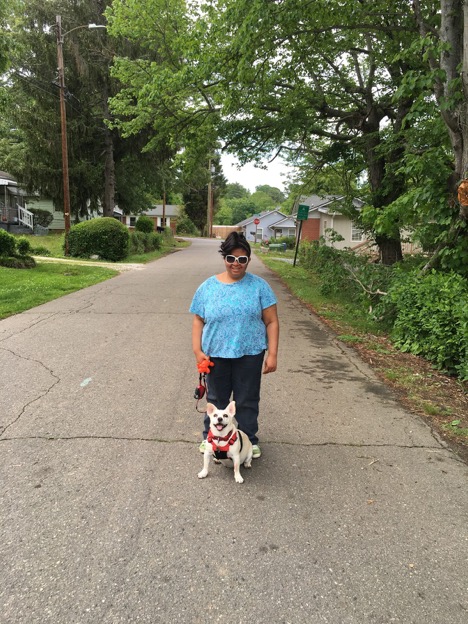Supporting Children with Technology-Based Solutions
GROWING THE SKILLS OF INDEPENDENCE
Smart-home technology: It's not just for adults! Smart technology can be extremely beneficial to children, providing them with natural supports. Developing independent living skills from a young age prepares children for the transition to adulthood and community-based living. Assistive technology can create opportunities for children to learn to be more independent while supporting their health and safety.
“The technology has been such a blessing. As a single parent, it was difficult for me to monitor Anissa round the clock. Now I can be on the opposite side of the house from Anissa and know if she goes into the kitchen or leaves the house in search of food,” says Janet Smith, mother of Anissa, a teenager with developmental disabilities.
MEET ANISSA
Like most teenagers, Anissa wants to have more independence at home and in the community. With her diagnoses of Prader-Willi syndrome and developmental disabilities, however, Anissa has needed intensive monitoring to keep her healthy and safe. When her mother first contacted us, she was supervising Anissa around the clock so that she didn’t overeat or leave the home in search of food.
Anissa spent 6 months at a Prader-Willi treatment facility where she was able to learn many life skills to help her manage her behavior and weight. When it was time to return home, her mother and the care coordinator contacted SimplyHome in search of ways to encourage Anissa to continue to make good decisions.
Through the assessment with SimplyHome, Janet decided that door sensors, a bed pressure pad, and a few motion sensors would provide the assurance the family needed while supporting Anissa’s independence. The sensor-based technology not only sends alerts to Janet's cell phone, but also provides audible notifications within the home.
OUTCOMES FOR ANISSA & HER FAMILY:
Anissa soon learned that when the system created alerts, her family would come check on her. As a result, she learned to redirect her own behavior, by returning to bed when she needs to and not leaving the home without supervision. Her mother notes that with the technology, the family no longer takes shifts to sit up at night, and as a result, her mother has been able to go back to work.
For Anissa to be more independent, the family wanted to teach her skills regarding:
Self-control related to eating outside of mealtime routines
Staying upstairs at night
Visiting relatives across the street by herself
Anissa’s system was designed to include motion sensors, a bed pressure pad and door sensors to:
Capture movement in certain areas of the home after school and at night
Help prevent ingress and egress during early morning and late night hours
Alert her and her family if she did not return to bed at night within a certain timeframe
The SimplyHome technology sequences activate only at certain times of day:
When Anissa is home
When Anissa needs a “teachable moment” to address or re-direct her behaviors
When Anissa’s safety requires natural support from family
Though Anissa is still a teenager, Anissa's family is focused on her future, planning for her success as an adult. As Janet says, "We know we are not going to be around forever. If we don't start supporting Anissa's independence now, then she won't have as many choices when she's an adult."
To find out more about SimplyHome technology, and how it can support the independent living skills of children and adults, contact us by requesting a free assessment.


